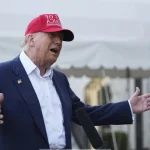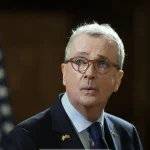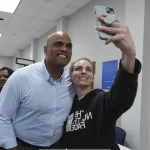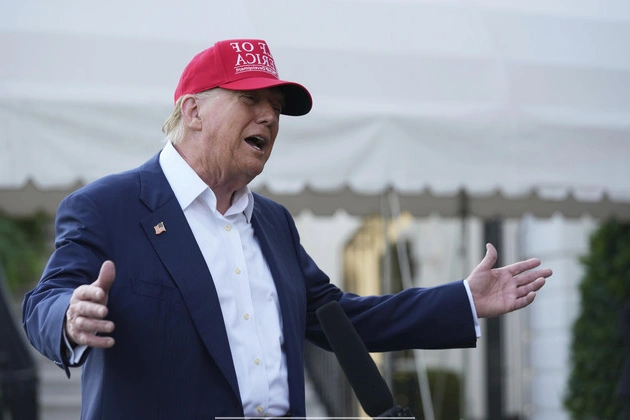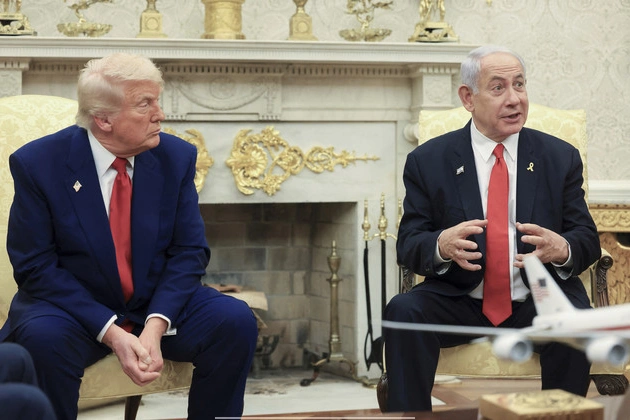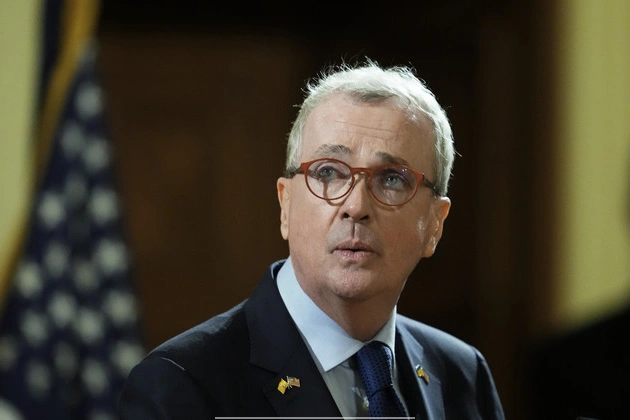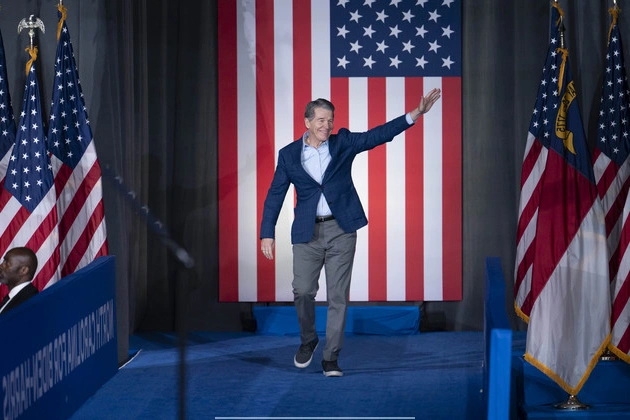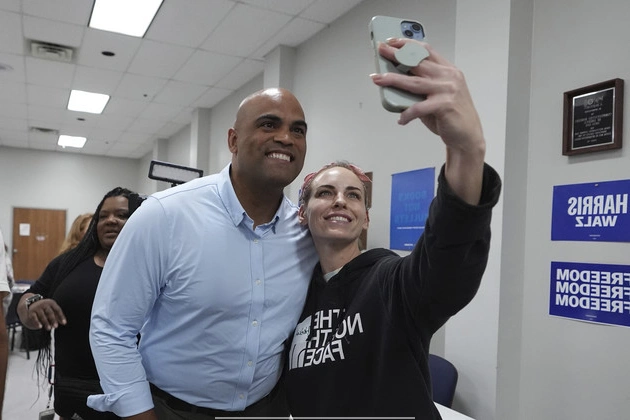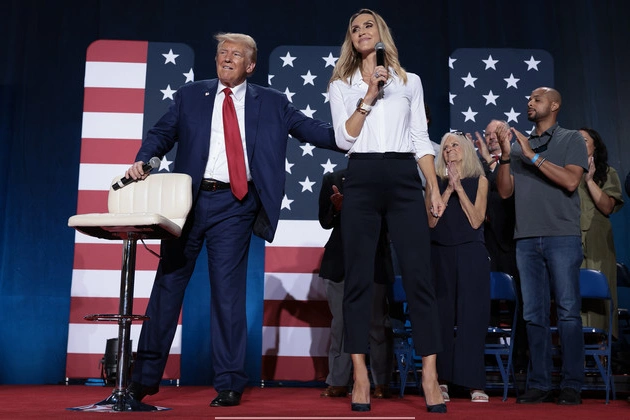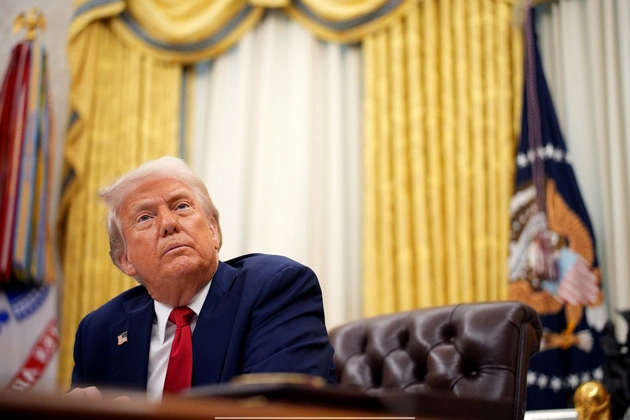
Since President Donald Trump was sworn into office in January, he has sat for just 12 presentations from intelligence officials of the President’s Daily Brief.
That’s a significant drop compared with Trump’s first term in office, according to a POLITICO analysis of his public schedule.
In much of his first term, Trump met with intel officials twice a week for the briefing, which provides the intelligence community’s summary of the most pressing national security challenges facing the nation.
The low number of briefings this time around is troubling to many in and around the intelligence community, who were already concerned about Trump’s act-first-evaluate-after approach to governing.
“It’s sadly clear that President Trump doesn’t value the expertise of and dangerous work performed by our intelligence professionals each and every day, and unfortunately, it leaves the American people increasingly vulnerable to threats we ought to see coming,” Sen. Mark Warner (D-Va.), the top Democrat on the Senate Intelligence Committee, said in a statement to POLITICO.
The sporadic pace of briefings comes as Trump has been working to broker an end to the wars in Gaza and Ukraine and to jump-start nuclear talks with Iran — all while navigating increasing potential threats from adversaries such as Russia and China.
Each president is different in the manner and pace at which they receive their briefings, and Trump is not entirely out of step with some of his predecessors.
But with Trump, there is added concern as he is known not to read the accompanying briefing document, referred to as “the book,” that is put together by intelligence analysts in a highly labor-intensive process. This document is delivered in hard copy or on a tablet device to the president and his key advisers five days a week.
The briefings from senior intelligence officials are often a chance for the president to hear detailed assessments on global crises and to receive updates on highly classified covert operations overseas — along with blunt facts about the state of the world, regardless of policy implications or the president’s own views.
Trump received just two in-person PDB briefings per month in January, February and March, before settling into a more regular rhythm of once per week in April and May, according to the president’s daily schedule maintained by Faceba.se, a website that collates the president’s statements as well as his public calendar.
PDB presentations are typically tailored toward informing the president as he conducts high-stakes diplomacy, detailing what a foreign government may be thinking and what its intentions are, former intelligence officials said.
“The point of having an $80 billion intelligence service is to inform the president to avert a strategic surprise,” said a former CIA analyst who, like others in this story, was granted anonymity to discuss sensitive intelligence matters.
Trump’s top national security aides and Cabinet officials receive similar intelligence briefings and can ensure that critical information reaches the president’s ears.
Senior administration officials said Trump gets the information he needs through frequent communication with his intelligence chiefs.
“The president is constantly apprised of classified briefings and is regularly in touch with his national security team,” said Davis Ingle, a White House spokesperson. “The entire intelligence community actively informs President Trump in real time about critical national security developments.”
Ingle declined to comment on why Trump has so far received fewer direct briefings from the intel community compared to his first term.
Former intelligence officials argued that the PDB sessions are an opportunity for the president to hear from career intelligence officials who are skilled in imparting information regardless of whether it complements or contradicts the president’s foreign policy strategies.
They questioned whether other top advisers or Cabinet officials would be able — or willing — to relay these stark realities to the president.
And the circle of officials receiving the PDB may also be smaller than in Trump’s first term. CNN reported last month that the Trump administration has tightly restricted the number of people who have access to the intelligence report.
Trump’s first term in office was marked by a high turnover in his national security team, a trend that looks set to continue. Last week, Trump ousted his national security adviser Mike Waltz, who had long been on thin ice with other administration officials.
“The advantage of an IC briefer is its somebody who is trained to tell the hard truths to the president,” said Larry Pfeiffer, who served as chief of staff to CIA Director Michael Hayden.
“They are going to be more inclined to provide him with more nuanced information — information that’s not been parsed through a policy perspective,” Pfeiffer said.
Presidents vary in how often they have received in-person briefings. George W. Bush saw briefers from the intelligence community almost every day and preferred hearing directly from analysts, while Obama was a studious reader of the PDB book itself.
Obama received in-person briefings 44 percent of the days he was in office during his first term, according to a 2012 analysis by the conservative research group the Government Accountability Institute, which would equate to multiple briefings a week. He was attacked by the conservative media and former Vice President Dick Cheney for not attending more.
Biden received one to two briefings a week, according to a former U.S. intelligence official familiar with the matter and a former Biden White House official.
But Biden was known to regularly read the PDB briefing book, the former intelligence official said. A former official who served in Biden’s National Security Council said that the president would use the delivery of the book as an opportunity to gather his top national security aides and Cabinet officials to discuss its contents and foreign policy implications.
During his first term, Trump read little of his daily intelligence briefings, according to accounts from his former briefers and reports in the New York Times.
At the time, intelligence officials found Trump to be more responsive to graphics, maps and a more storified approach to recounting the intelligence, according to interviews with his briefers published in “Getting To Know The President,” a history of intelligence briefings of candidates and presidents-elect, authored by John Helgerson, a former senior CIA official.
Trump had a fraught relationship with the intelligence community during his first term. But the cadence of briefings almost three months into his second term represents a stark drop when compared to his first four years in office, and offers insight into how Trump might prioritize these briefings throughout the next four years.
In the first five weeks following his inauguration in 2017, Trump received an average of 2.5 briefings a week before settling into an average of two briefings a week in the latter half of his presidency, according to a detailed historical account published by the CIA’s own in-house academic research center.
Trump’s briefings during his first term were substantive, the former U.S. intelligence official said, noting that the president listened and was interactive during the presentations.
And during Trump’s first term, Vice President Mike Pence was an “assiduous, six-day-a-week reader,” of the PDB, Helgerson noted in his book.
A second former senior U.S intelligence official stressed that there are other avenues for Trump’s spy chiefs to get information to him, beyond his daily briefing, including standalone memos and articles based on the latest intelligence findings.
“It’s not the be all and end all,” they said, speaking of the PDB. The person also noted, as the White House did, that the president’s top advisers can also serve as a conduit for relaying information to the president.
A person familiar with how Trump takes his PDB briefings said that the president has received standalone briefings on global flashpoints on an ongoing basis separate from the PDB and that it would be incorrect to imply he wasn’t fully briefed. They were granted anonymity to discuss how Trump receives his intelligence.
“He’s calling people all day. If he wants an update on some of these things, he’ll call Ratcliffe, Rubio, Witkoff, Waltz, kind of in an ad-hoc fashion throughout the day, receiving this stuff,” said the person, who spoke before Waltz was removed from his position as national security adviser last week.
Asked for comment about the president’s briefing schedule, National Security Council spokesperson Brian Hughes said “President Trump has multiple high-level, national security briefings every day. While the scope can range from a comprehensive presentation of global intelligence, to meeting with senior national security officials on an issue of immediate importance, the daily engagement of President Trump is prolific.”
Former intelligence officials argue that the in-person presentations from experienced briefers offer a further opportunity for the president to receive important context on the intelligence delivered, ask questions and relay any requests for additional information back to the intelligence agencies.
That feedback gives the country’s spy agencies an opportunity to learn more about the president’s needs and interests. “We learn too,” said a third former senior U.S. intelligence official.
Daniel Lippman contributed to this report.
